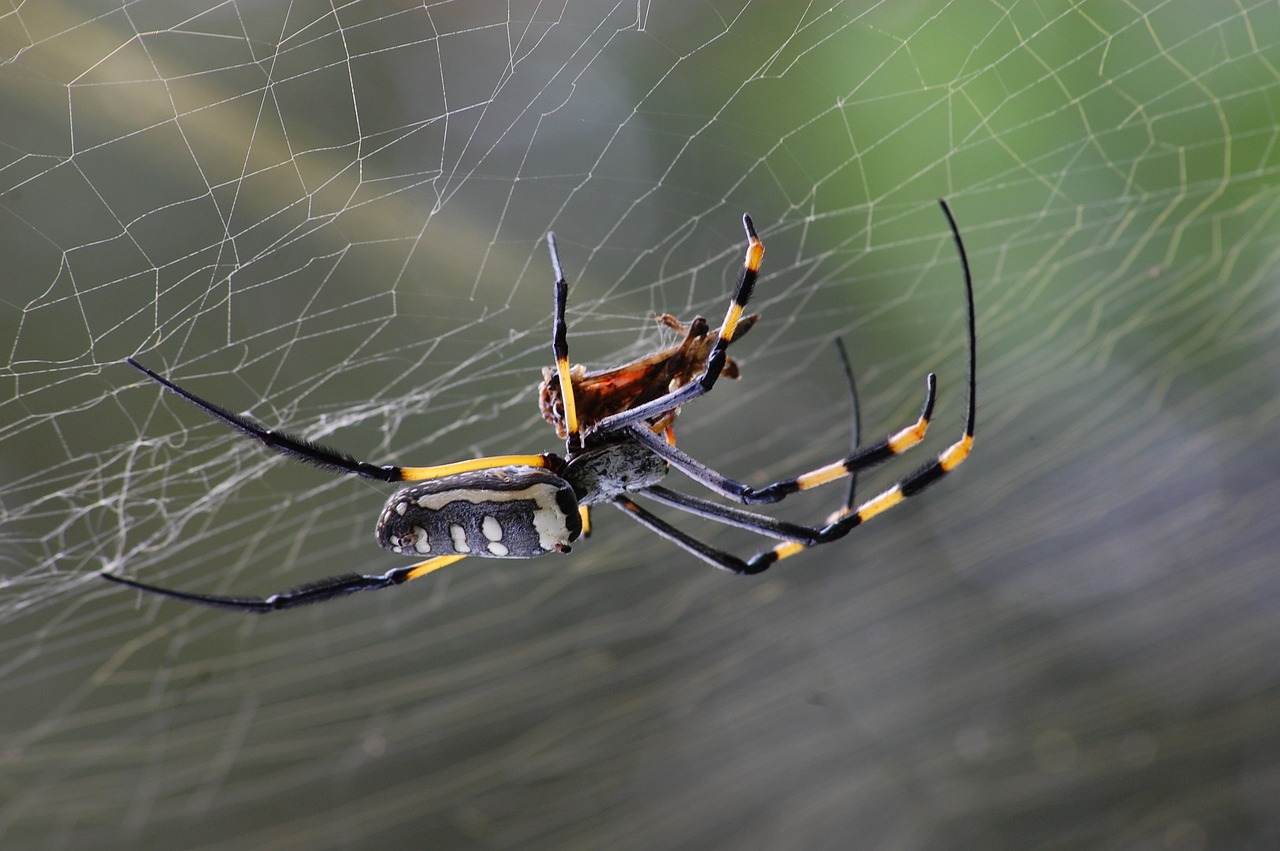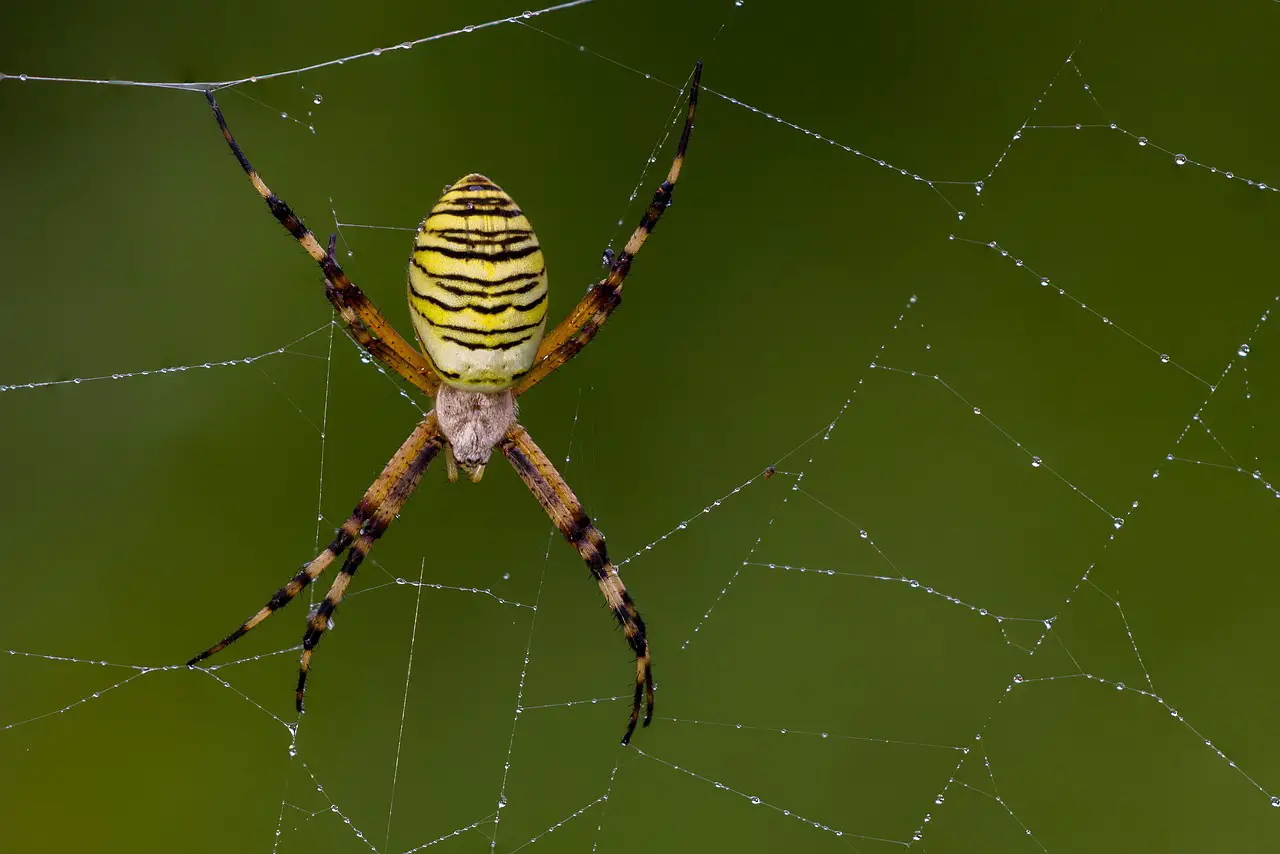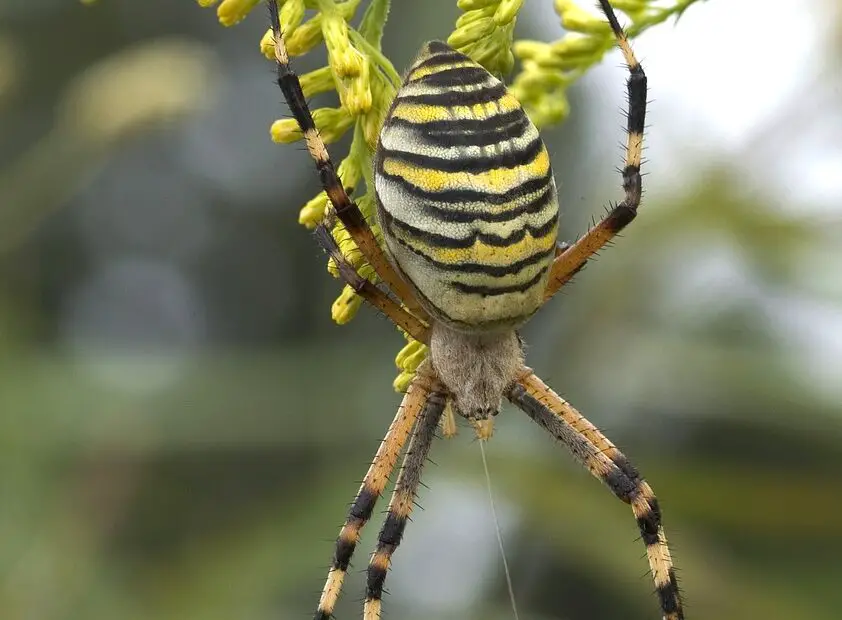Spiders are renowned for their extraordinary abilities, from intricate web-building to stealthy hunting tactics. However, there is a subset of spiders that possesses a truly remarkable adaptation: the ability to fly. In this article, we delve into the intriguing world of flying spiders.
We explore the mechanism behind their flight, highlight fascinating species, shed light on their adaptations, dispel misconceptions, and discuss their ecological importance. Join us as we unravel the mysteries of these airborne arachnids.
You may also want to read about the top 7 big spider species.
What Are Flying Spiders?
Spider Ballooning
Flying spiders engage in a behavior known as ballooning, where they release silk threads into the air to catch the wind and propel themselves through the skies. This behavior allows them to disperse to new areas, colonize new habitats, and escape competition.
Mechanism of Flight
The flight mechanism of flying spiders is based on the principle of aerodynamic lift. By using their silk threads as sails, they take advantage of air currents to become airborne and navigate over considerable distances.

Species of Flying Spiders
Gossamer-winged Spiders
Gossamer-winged spiders, also known as money spiders, are among the most well-known flying spiders. They belong to the family Linyphiidae and are characterized by their small size and delicate appearance. These spiders are commonly observed floating through the air on gossamer silk strands.
Golden Silk Spider
The golden silk spider, also called the banana spider, is a large orb-weaving spider known for its vibrant yellow color and golden silk webs. Although not true flyers, they employ a unique form of ballooning where they release multiple silk strands, allowing them to be carried by the wind.
Amazing Adaptations
Silk Production and Structure
Silk plays a vital role in the flight of these spiders. It is lightweight, strong, and possesses unique aerodynamic properties. The spiders produce specialized silk types, such as dragline silk, that aid in flight and ensure stability during aerial maneuvers.
Lightweight Bodies
Flying spiders have evolved to have lighter bodies compared to their non-flying counterparts. They achieve this through adaptations such as reduced body mass and modifications in body shape, allowing for more efficient flight.
Misconceptions and Fear
Harmless to Humans
Despite their ability to fly, flying spiders pose no direct threat to humans. They are not aggressive towards humans and do not possess venom potent enough to cause harm. In fact, their focus is on finding new habitats and food sources, rather than seeking out human encounters.
Natural Phenomenon
The phenomenon of flying spiders should be appreciated as a natural occurrence rather than a cause for fear. It is a fascinating adaptation that has allowed these arachnids to thrive in various environments and contribute to ecosystem dynamics.

Ecological Importance
Dispersal of Spiderlings
The flight behavior of flying spiders plays a crucial role in the dispersal of spiderlings, which aids in preventing inbreeding and promoting genetic diversity. By reaching new areas, these spiders colonize different habitats and contribute to the ecological balance.
Role in Pest Control
Flying spiders contribute to natural pest control by preying on small insects while in flight. They help regulate insect populations and maintain ecosystem stability, making them valuable allies in agricultural settings and natural ecosystems alike.
Fascinating Flying Spider Behaviors
Ballooning in Mass Migration
Flying spiders exhibit mesmerizing mass migration events, where thousands of spiders take to the skies simultaneously. These mass ballooning events create spectacular displays and provide opportunities for scientific observation and study.
Courtship Displays
Flying spiders engage in intricate courtship displays while airborne, demonstrating complex behaviors to attract mates. These displays often involve visual cues, vibrational signals, and synchronized movements, adding another layer of wonder to their aerial acrobatics.
Conservation and Future Research
Studying Silk Properties
Further research on the silk properties of flying spiders can lead to advancements in materials science and engineering. The lightweight and robust nature of their silk could inspire the development of innovative materials with applications in various industries.
Understanding Climate Impact
Given their reliance on wind currents for flight, studying flying spiders can provide insights into the effects of climate change on aerial dispersal and species distribution. Monitoring their populations and behaviors can contribute to a better understanding of the impacts of environmental changes on ecosystems.
Conclusion
Flying spiders, with their astonishing ability to take to the skies, captivate our imagination and shed light on the incredible adaptations found in the natural world. They demonstrate the diverse strategies and remarkable capabilities of spiders as they navigate through the air. By appreciating these fascinating arachnids and dispelling misconceptions, we can gain a deeper understanding of their ecological importance and contribute to their conservation. So, let us marvel at the aerial feats of flying spiders and embrace the wonder they bring to our world.
FAQs
- Are flying spiders dangerous to humans? No, flying spiders are not dangerous to humans. They do not pose a direct threat and are not aggressive. Their focus is on dispersal and finding suitable habitats rather than interacting with humans.
- Can flying spiders fly long distances? Yes, flying spiders can travel considerable distances through their ballooning behavior. They release silk threads that catch the wind, allowing them to navigate over long distances and colonize new areas.
- Do all spiders have the ability to fly? No, not all spiders have the ability to fly. Flying spiders belong to specific species that have evolved the capability to become airborne through the use of silk and wind currents.
- What is the purpose of flying in spiders? Flying spiders engage in flight to disperse and colonize new habitats, escape competition, and find food sources. It is an adaptation that aids in their survival and contributes to ecosystem dynamics.
- Are flying spiders rare to encounter? Encounters with flying spiders may vary depending on various factors such as geographic location and specific spider species. While flying spiders are not as commonly observed as their non-flying counterparts, they can still be encountered in suitable habitats and during mass ballooning events. These events, where multiple spiders take to the skies simultaneously, can create awe-inspiring displays in nature.
